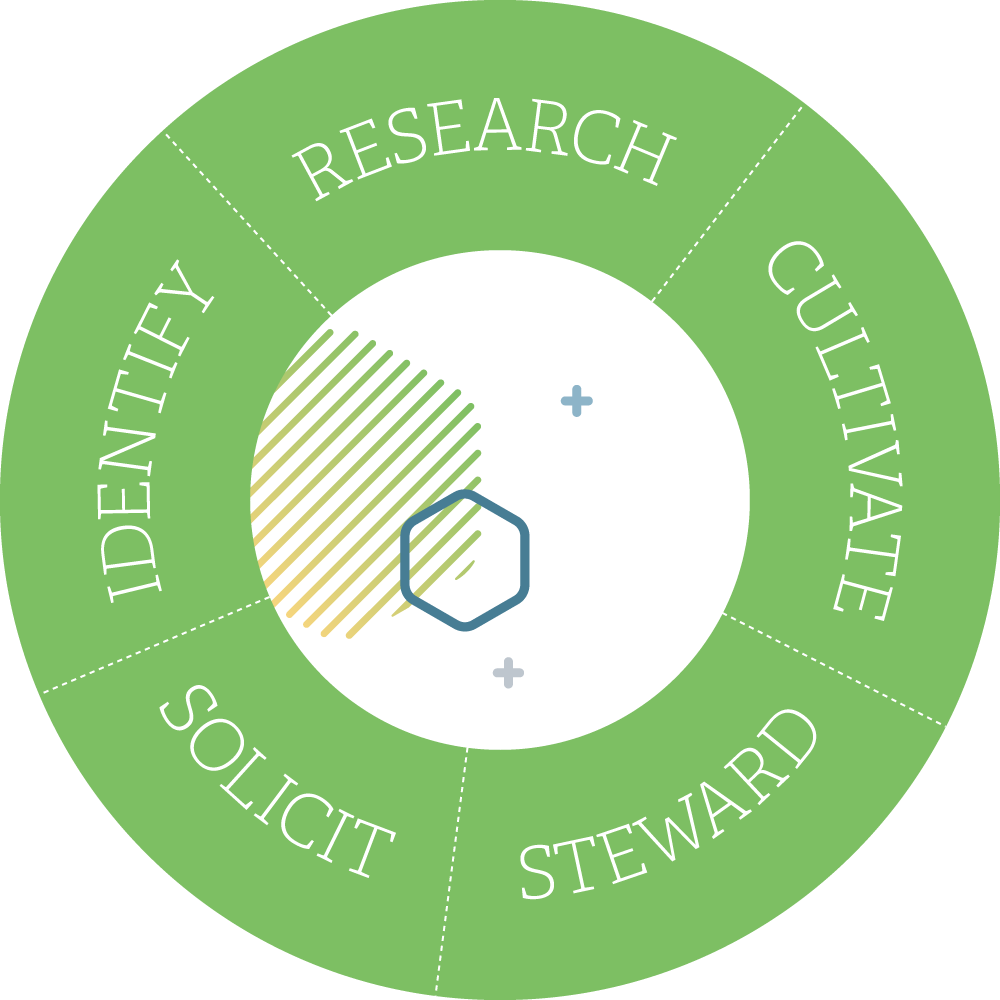Your donors are the key to your organization’s success–which is why the relationships you build with your donors are so important! To create the best donor retention strategies for your organization, understanding the donor cycle is crucial for transforming your efforts into success. The donor life cycle provides your nonprofit with a way to organize your donors into different stages of engagement to help you get better results.
Delve into the intricacies of the donor cycle, explore the donor life cycle stages, and learn what best practices will help you maximize donor engagement and retention for sustainable growth:
What is a donor cycle?
The donor cycle, also known as the donor life cycle, is a systematic approach you can use to manage and nurture your relationships with donors over time. This cycle encompasses all interactions from the initial awareness and cultivation stages to solicitation and ongoing stewardship, ensuring a holistic approach to donor engagement.
By understanding and optimizing each stage of the donor cycle, your organization can build stronger connections with your supporters, foster trust, and increase the likelihood of long-term commitment and loyalty. It’s crucial to your nonprofit’s success because the donor cycle can help you increase your donor retention rates which saves your organization time and money.
How does the donor life cycle help nonprofits?
The donor life cycle provides a structured framework for engaging with your donors from the initial introduction to ongoing stewardship and renewal. Breaking down the process into manageable and strategic stages helps your team target their efforts more effectively to meet each donor’s specific needs and expectations at each step of their journey. This approach not only enhances donor satisfaction by providing a personalized experience but also significantly improves fundraising outcomes by maintaining continuous engagement and reducing donor attrition.
If you learn a deeper understanding of donor behaviors and preferences, you can create tailored communications and initiatives that resonate with your audience and lead to more meaningful and impactful relationships over time.

5 stages of the donor life cycle
Understanding the donor cycle involves recognizing its five key stages and how each plays a critical role in fostering and maintaining lasting donor relationships. This structured approach helps you effectively engage and retain supporters over time.
Identify
The first stage, identification, involves pinpointing potential donors who have both the capacity and inclination to support your cause. This process typically includes researching individuals or organizations that align with your mission and have a history of philanthropic giving. Successful identification requires a thorough understanding of your target audience’s values and interests.
During this stage, you need to cast a wide net and gather as much information as possible, using various tools and platforms to identify potential donors. You should look for those who share your values and have demonstrated a commitment to similar causes. This initial step sets the foundation for building long-term relationships rooted in mutual interest and shared goals.
Research
Once potential donors are identified, the next stage of the donor life cycle is research. This stage involves assessing whether these potential donors are a suitable match for your organization. During your research, look for factors including financial capacity, giving history, and alignment with your mission.
Researching donors helps you prioritize your efforts and focus on those who are most likely to regularly contribute to your cause. This targeted approach ensures that your resources—time, energy, and funds—are used efficiently and effectively. By concentrating on those with the highest potential to support your mission, you can maximize your impact and strengthen your donor base.
Cultivate
The cultivation stage is about building and nurturing relationships with researched donors. In this stage, your organization should start to connect with potential donors through personalized communication, events, and stewardship activities. The goal is to create a genuine connection and demonstrate the tangible impact of their support on your mission. During cultivation, it’s essential to tailor your interactions to each donor’s preferences and interests.
This personalized approach shows that you value their contribution while also deepening their commitment to your cause. Effective cultivation includes multiple points of contact, such as regular updates, invitations to exclusive events, and personalized thank-you notes, all aimed at reinforcing your donor’s connection to your mission.
Solicit
Solicitation is the donor cycle stage where you formally ask for a donation. This can be accomplished through various methods, such as direct mail, email campaigns, phone calls, or in-person meetings. The key is to make a compelling case for support and clearly communicate the benefits of donating.
When soliciting donations, remember to be respectful, considerate, and transparent. Providing detailed information about how your donor’s contribution will be used and the impact it’ll have builds trust and encourages donors to give generously. Crafting a persuasive message that resonates with each donor’s personal values and aligns with their philanthropic goals is a great way to achieve a successful solicitation.
Steward
The final stage, stewardship, involves maintaining and strengthening the relationship with your donors after they’ve made a donation. This includes expressing gratitude, providing regular updates on the impact of their contribution, and involving them in ongoing activities.
Effective stewardship is crucial for donor retention because it fosters a sense of belonging and appreciation among your supporters. By continuously engaging your donors and showing genuine gratitude for their support, you can build lasting relationships that encourage future giving. Regular communication, recognition in donor reports, and invitations to participate in your nonprofit’s campaigns are all part of a robust stewardship strategy that underscores your donor’s importance to your mission.
Donor cycle best practices
To make the most of the donor cycle, you can implement some best practices that help maximize your results. These strategies can help you optimize each stage, enhance your overall fundraising efforts, and build stronger relationships with your supporters.
Segment your donors
Segmenting your donors allows you to tailor your communication and engagement strategies to different groups in the donor cycle, ensuring that each message is relevant and effective. If you divide your donors into categories based on factors such as giving history, interests, and demographics, you can create targeted campaigns that resonate with each segment. For example, you can craft a special series of messages for long-term donors who have supported your organization consistently over the years, while developing a different approach for first-time donors.
Effective segmentation helps you create personalized messaging to increase the likelihood of donor engagement and support. This ultimately fosters a more meaningful connection between your organization and your supporters.
Utilize multiple marketing channels
Reaching donors through various marketing channels helps you connect with them in ways that suit their individual preferences and habits. You should consider using a mix of direct mail, email, social media, and events to engage with your audience because some of your donors may prefer receiving updates and appeals via traditional mail, while others might be more responsive to digital communications like email newsletters or engaging social media content.
By diversifying your communication methods, your message can reach a wider audience and resonate with different types of donors, catering to their unique communication preferences and maximizing your potential impact.
Time your donation requests
Timing is critical when it comes to the solicit stage of the donor life cycle, as it can greatly influence a donor’s decision to give. Pay attention to different factors, including your donor’s giving history, the time of year, and current events that may impact their willingness to contribute. For example, the end of the calendar year is often a popular time for fundraising because individuals are often looking to make tax-deductible donations before year-end.
Similarly, major holidays or special events can provide unique opportunities to connect with your donors. Strategically timing your asks helps you make sure that your requests are well-received and increases the likelihood of a positive response. Be mindful of your donors’ schedules and preferences to maximize your results and ensure your appeals are both timely and effective.
Use your donor data
Data-driven decision-making is essential for optimizing the donor cycle and improving your fundraising outcomes. Use donor data, such as past giving patterns, engagement metrics, and demographic information, to create your strategies and make informed decisions about how to engage with your audience. Analyzing donor data helps you identify trends, track progress, and understand what works best for your organization. For instance, you could discover a particular type of campaign consistently yields higher engagement from a specific donor segment by examining your donor data.
This information is invaluable for refining your approach and allows you to tailor your efforts to better meet the needs and preferences of your donors, which ultimately achieves better outcomes for your organization.
Take advantage of nonprofit technology
Leveraging technology for nonprofits can significantly enhance your donor engagement efforts by providing innovative solutions to traditional challenges. Utilize tools such as donor management systems, which allow you to manage and analyze donor interactions in a centralized database, providing valuable insights into donor behavior and preferences. Email marketing platforms can also help you craft personalized messages that resonate with your audience which increases the likelihood of engagement and support. You can also look at your social media analytics for a comprehensive overview of your online presence and help you identify trends and patterns to optimize your strategy.
Technology enables you to automate tasks like sending thank-you emails and reminders, freeing up time for more strategic initiatives. It also allows you to track interactions in real-time to help you follow up with personalized communication in a timely manner. The right fundraising software can provide you with robust reporting tools that measure the success of your campaigns and offer crucial data you can use to refine and improve future efforts. By integrating technology into your strategy, you can save time and resources, increase your outreach, and ultimately achieve better results in donor engagement and fundraising.
Final thoughts for donor life cycles
Understanding and optimizing the donor cycle is key to your nonprofit’s success. With strategies using the donor life cycle, you can build stronger relationships with your donors and achieve greater fundraising success. Remember, effective donor engagement is a continuous process that requires dedication, empathy, and a strategic approach.
Additional resources
Check out these additional resources for more information on stewarding and retaining donors:
- Donor Stewardship: Create Lifelong Donors in 6 Steps. Use these 6 steps to steward donors into lifelong supporters!
- Retention Strategies for Different Types of Donors from Year End. These retention strategies can help you keep donors engaged after the end of the year.
- Start and Grow a Recurring Donor Program. Watch this webinar to learn how to start your own recurring donor program!





